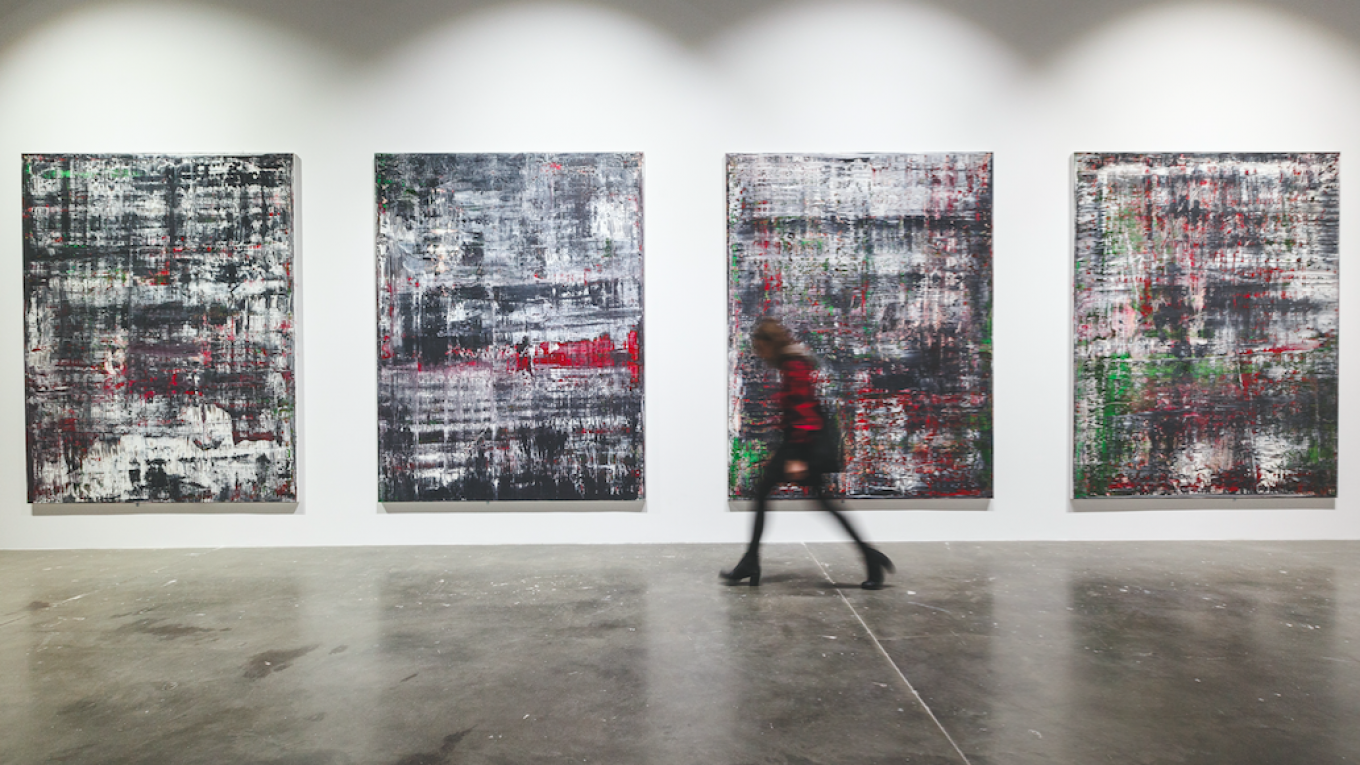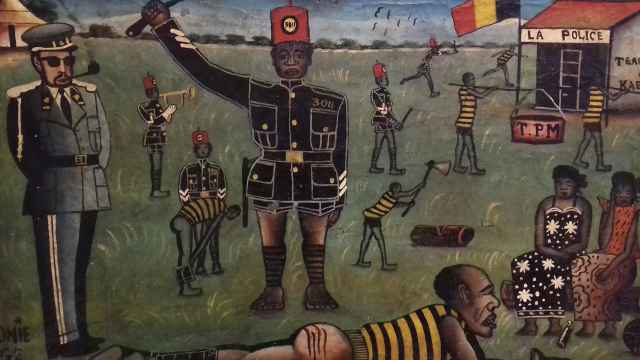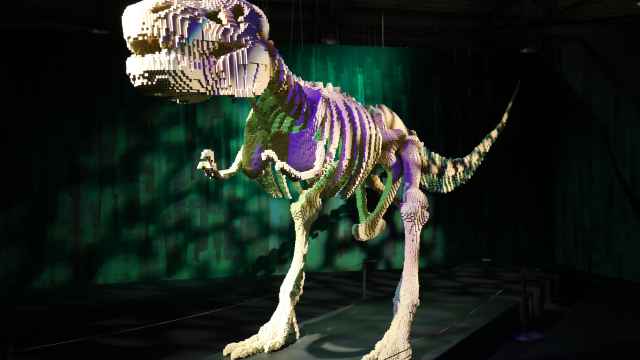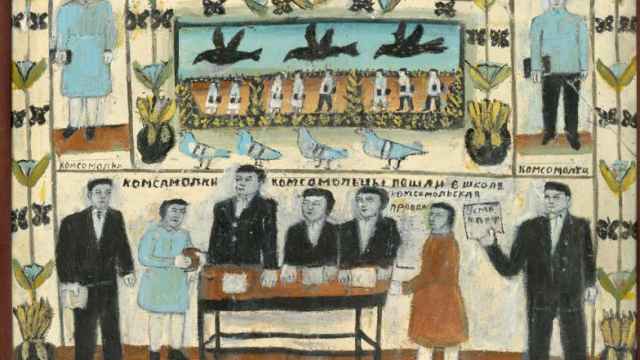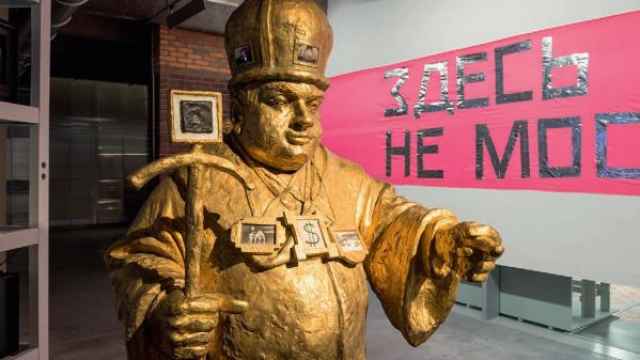Gerhard Richter has produced works ranging from photorealism to abstract-impressionism since he left East Germany in 1961, shortly before the construction of the Berlin wall. Now, at 84-years old, Richter is widely regarded to be the world’s greatest living artist.
His engagement with the titanic events of the 20th century is at the heart of his current exhibition at the Jewish Museum and Tolerance Center, the first major solo exhibition of the artist’s career in Russia.
The centerpiece of the show, “Abstraction and Appearance,” is an abstract series dedicated to the Auschwitz-Birkenau Concentration Camp. Curated by Paul Moorhouse, senior curator at the National Portrait Gallery in London, the exhibition explores if and how art can represent a monumental human tragedy of such magnitude.
A Response to the Holocaust
The exhibition surveys Richter’s major works from 1973 to 2016, particularly focussing on the artist’s use of abstraction. But as Moorhouse was keen to point out, this is just a facet of his oeuvre.
“He’s famously an artist who works in a range of different styles, some of which appear contradictory — they seem almost opposed. As a painter, he is famous for working in a way that both figurative and at the same time abstract. These two things which have been opposed for so much of the 20th century are united in Richter’s work.”
This union of opposing styles is most tangible in “Birkenau” (2014), a series of four large-format abstract paintings based on photographs taken by a Jewish Sonderkommando at the Auschwitz-Birkenau Concentration Camp in August 1944. The atrocities depicted in the photographs are not visible in the paintings, and instead layered over with daubs of paint.
These are accompanied by the original photographs and 93 photographic details of Richter's abstract works, with the aim of exploring the role of replication in our experience of reality and appearance.
For Moorhouse the question posed in “Birkenau” is about how we react to reality with art: “how do we represent an event which was entirely real, but none of us here experienced it? We have to find way to describe it.”
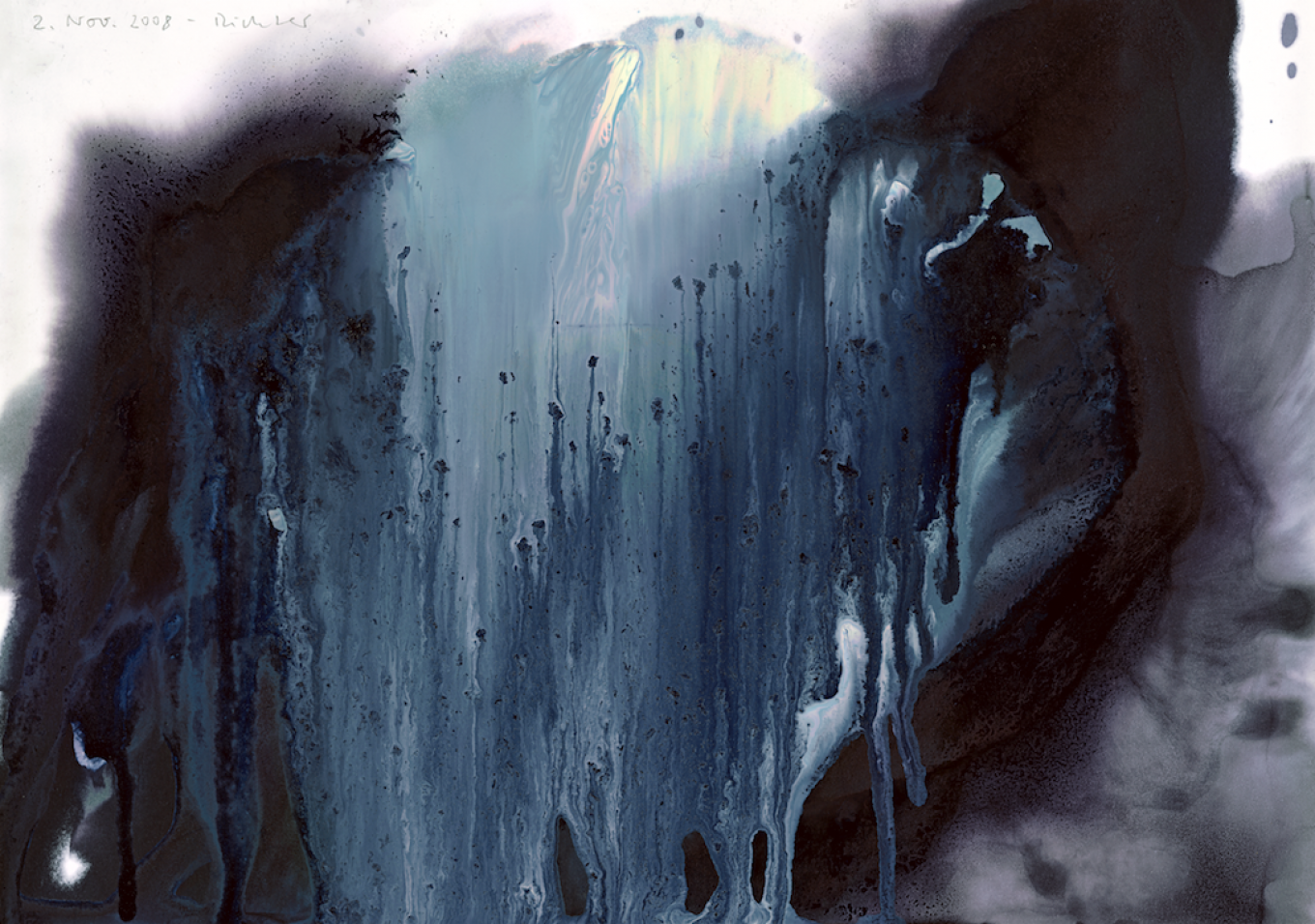
Found Photographs and Photorealism
In 1962 Gerhard began making paintings that were based on photographs. Using images taken from magazines and family albums, he would turn them into incredible photorealistic painted portraits, landscapes, and still lifes. In some works he went on to incorporate a signature “blur” to image on the final canvas.
In 1966 he surprised everybody by changing the direction completely and began making abstract paintings. First, as Moorhouse puts it, they were just “random permutations of color,” but by 1976 he was making the “extraordinary painterly abstractions” he is now most famous for.
Speaking of his art, Richter has said: “I don’t mistrust reality, of which I know next to nothing. I mistrust the picture of reality conveyed to us by our senses, which are imperfect and circumscribed.”
This is particularly tangible in his “overpainted photographs,” a style in which photographic and abstract elements of his work come together, such as the special project “Museum Visits,” which includes a selection of 24 works on show at the current exhibition.
Moorhouse is firm that that “Abstraction and Appearance” is not a retrospective. “Although it is the first time Richter's work is shown in Russia, we didn't want to do a kind of introduction. What we wanted to do was to create an exhibition that would have a relationship with this museum and with Jewish history.
A Message from The Moscow Times:
Dear readers,
We are facing unprecedented challenges. Russia's Prosecutor General's Office has designated The Moscow Times as an "undesirable" organization, criminalizing our work and putting our staff at risk of prosecution. This follows our earlier unjust labeling as a "foreign agent."
These actions are direct attempts to silence independent journalism in Russia. The authorities claim our work "discredits the decisions of the Russian leadership." We see things differently: we strive to provide accurate, unbiased reporting on Russia.
We, the journalists of The Moscow Times, refuse to be silenced. But to continue our work, we need your help.
Your support, no matter how small, makes a world of difference. If you can, please support us monthly starting from just $2. It's quick to set up, and every contribution makes a significant impact.
By supporting The Moscow Times, you're defending open, independent journalism in the face of repression. Thank you for standing with us.
Remind me later.


